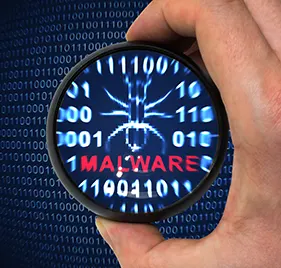The article discusses the most common cyber threats to business and how to protect against them. Cyber threats can come from many sources, including employees, outsiders, and even business partners. The most common threats include phishing, malware, and ransomware. Businesses can protect themselves by training employees in cybersecurity, using strong authentication, and having a good cyber incident response plan.
Phishing
In the business world, phishing is one of the most common cyber threats. is a type of cyber attack that involves sending fraudulent emails or messages in an attempt to trick victims into revealing sensitive information, such as login credentials or financial information. attacks can be very difficult to spot, as the attackers often use spoofed email addresses and websites that look very similar to the real thing. In some cases, the attacker may even pose as a trusted individual or organization. If you receive an email or message that looks suspicious, do not click on any links or open any attachments. Instead, contact the sender directly to verify the authenticity of the message.
Malware
There is no single answer to the question of what the most common cyber threats to business are, as the threat landscape is constantly changing and evolving. However, there are some types of threats that are more common than others. One of the most common types of cyber threats is malware. Malware is a type of software that is designed to damage or disable computers and other electronic devices. Malware can be spread in a number of ways, including through email attachments, websites, and social media. Malware can also be spread by infected devices that are connected to a network. Once malware is on a device, it can do a variety of things, including stealing information, deleting files, and taking control of the device. Malware is a serious threat to businesses, as it can cause significant damage and disruption. businesses should take steps to protect themselves from malware, such as using antivirus software and keeping devices up-to-date with the latest security patches.
Ransomware
There’s no question that cybercrime is becoming more sophisticated and widespread, with devastating consequences. In fact, a recent study found that 43% of businesses have experienced a cyberattack in the past 12 months, and 60% of those attacks resulted in data loss.
One of the most common and costly cyber threats facing businesses today is ransomware. This malicious software encrypts a victim’s files and demands a ransom be paid in order to decrypt them. Often, the attackers will threaten to delete the files or publish them publicly if the ransom is not paid.
can be extremely costly for businesses, not just in terms of the ransom itself, but also in terms of the downtime and lost productivity while the files are encrypted. In some cases, businesses have had to pay the ransom and still not been able to recover their data.
There are a few things businesses can do to protect themselves from ransomware, including backing up data regularly, keeping security software up to date, and training employees on how to spot and avoid phishing emails (which are often used to deliver ransomware).
Despite the challenges, it’s important for businesses to remember that they are not helpless in the face of cyber threats. By taking some simple precautions, they can significantly reduce their risk of becoming a victim of ransomware or any other type of cyberattack.
DDoS Attacks
A Distributed Denial of Service (DDoS) attack is a type of cyber attack that involves bombarding a server or network with requests, overwhelming it and causing it to crash. DDoS attacks can be very disruptive and can cause significant financial losses for businesses. The most common type of DDoS attack is a SYN flood attack, which involves flooding a server with SYN requests, causing it to run out of resources and crash. Other types of DDoS attacks include UDP floods, ICMP floods, and HTTP floods. DDoS attacks are usually carried out by botnets, which are networks of infected computers that are controlled by attackers.
Social Engineering
Most businesses are aware of the need to protect their computer systems from viruses and hackers. However, they may not be aware of the threat of social engineering. Social engineering is the use of deception to trick people into revealing sensitive information or allowing access to systems. Hackers will often pose as employees or customers to gain access to systems or data. They may also send phishing emails to try to get employees to click on links that will install malware or give them access to corporate networks.
Social engineering is a serious threat to businesses of all sizes. Hackers can use social engineering to gain access to systems and data that they could not otherwise access. They can also use it to steal sensitive information, such as customer data or financial information. businesses need to be aware of the threat of social engineering and take steps to protect themselves.
There are a few things businesses can do to protect themselves from social engineering attacks. They should educate their employees about the threat and make sure they know not to give out sensitive information or click on links from unknown sources. They should also have security measures in place, such as firewalls and intrusion detection systems, to help protect their systems from attack.
